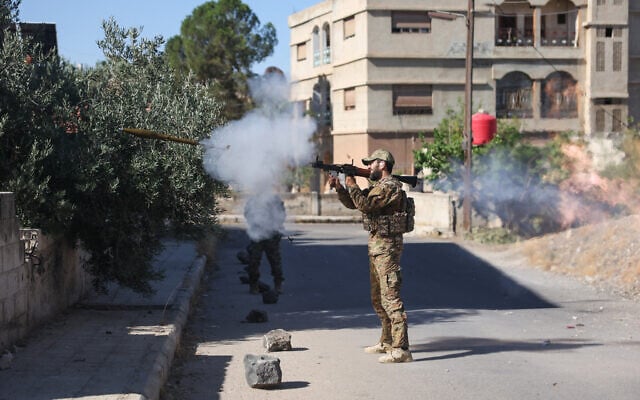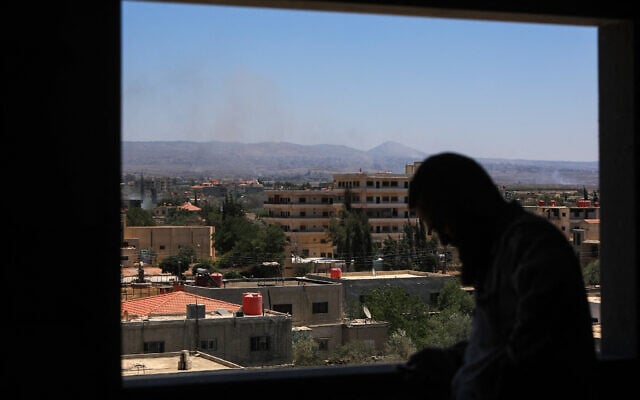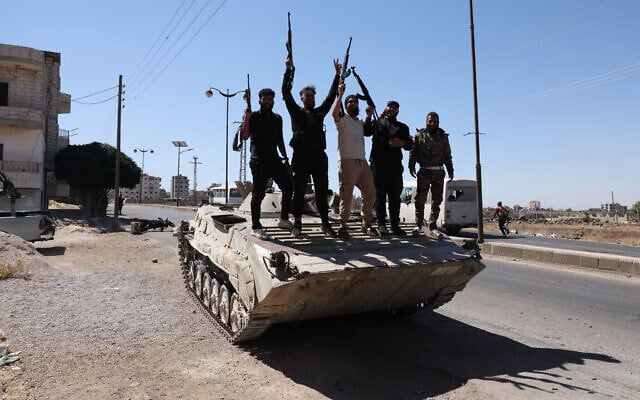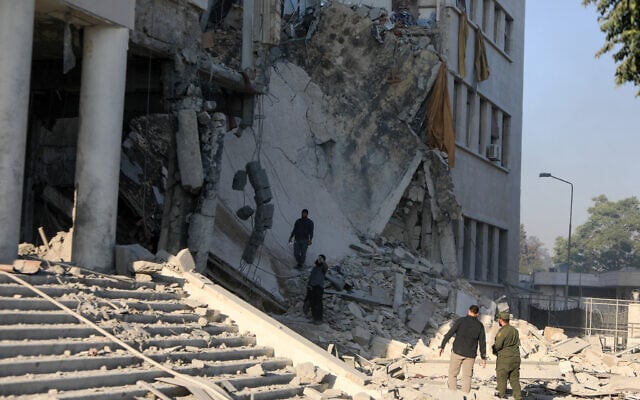


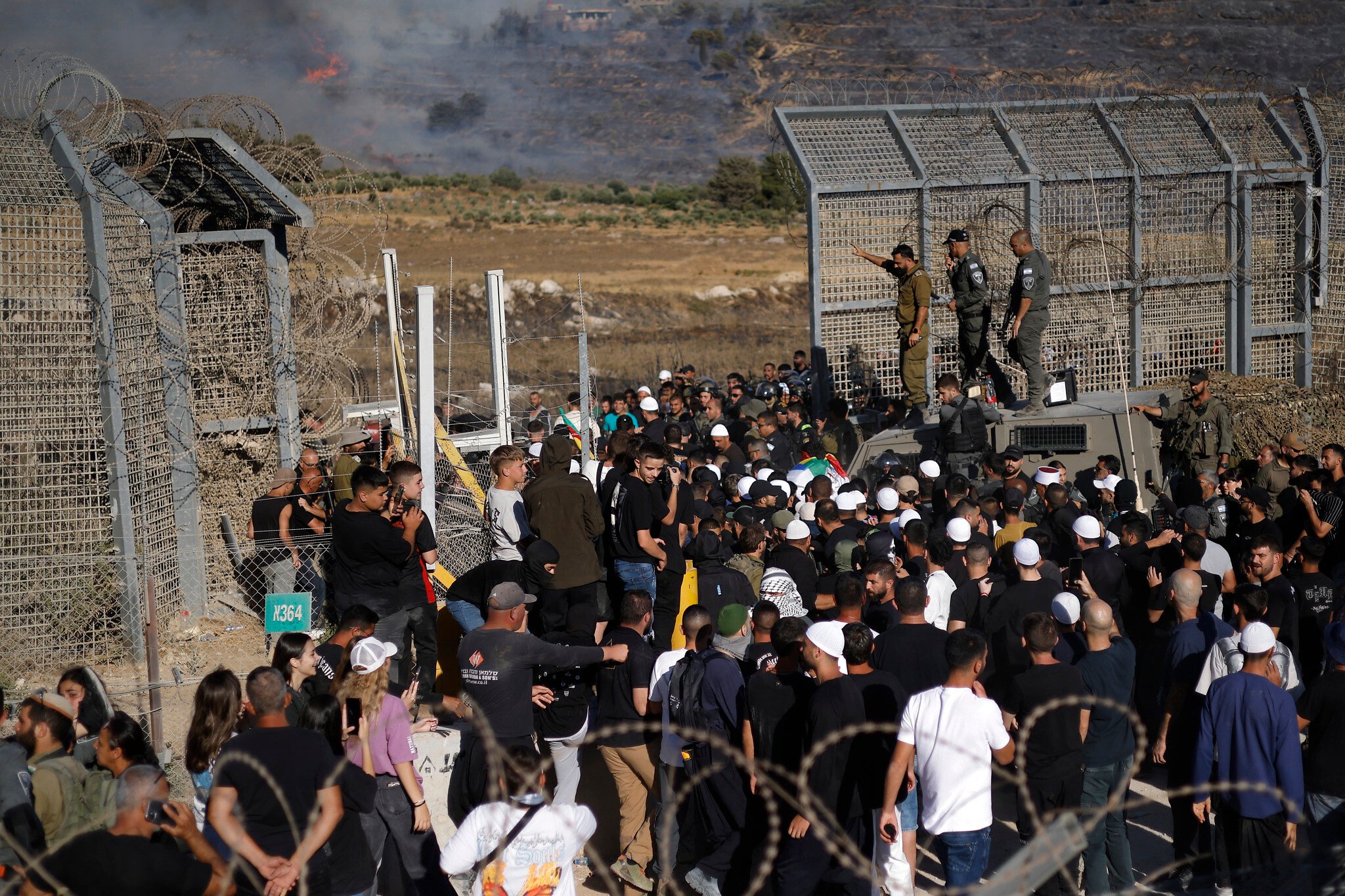
Syria announced it had begun withdrawing its army from Druze-majority Sweida city on Wednesday night after agreeing to a new ceasefire that it said would bring a complete halt to its military operations there, even as some Druze leaders rejected it and Israel vowed to protect the minority.
The announcement came after US Secretary of State Marco Rubio said parties to the sectarian conflict that has raged since the weekend “have agreed on specific steps” for a truce. A previous truce announced Tuesday appeared to have little effect on the ground in the southern region, where more than 300 people have been killed, according to a monitor.
According to the text of the new ceasefire agreement, published by Syria’s interior ministry, there will be a “total and immediate halt to all military operations,” as well as the formation of a committee comprising government officials and Druze spiritual leaders to supervise its implementation.
The country’s defense ministry later said it had “begun withdrawing from the city of Sweida in implementation of the terms of the adopted agreement after the end of the sweep of the city for outlaw groups.”
The ministry’s statement made no mention of the withdrawal of any other government security forces deployed to the city.
Witnesses in Sweida had said government forces despatched to Sweida with the stated objective of ending clashes betwen Druze and Bedouin fighters joined with the latter to attack Druze fighters and civilians.
Syria’s President Ahmad al-Sharaa, head of the former al-Qaeda affiliate that toppled the country’s longtime leader Bashar al-Assad in December, condemned the violations and vowed to punish the perpetrators.
“These criminal and illegal actions cannot be accepted under any circumstances, and completely contradict the principles that the Syrian state is built on,” he said in a statement Wednesday.
Amid the talk of a truce, Israel kept up its bombardment of Syrian government forces, vowing to defend the Druze, as around 1,000 members of the community in Israel rushed across the border to join the fight. IDF troops and two Israeli Druze lawmakers went into Syria to bring the Israeli civilians back.
Rubio said Wednesday that the warring parties in Sweida “have agreed on specific steps that will bring this troubling and horrifying situation to an end tonight.”
“This will require all parties to deliver on the commitments they have made, and this is what we fully expect them to do,” wrote Rubio on X.
Rubio earlier said the clashes had led to a “misunderstanding” between the Israeli and Syrian governments.
In a video carried by Syrian state television, Sheikh Youssef Jarboua, one of Syria’s three main Druze spiritual leaders, read out the 10 points of the ceasefire agreement, which also included “the full integration of the province” of Sweida into the Syrian state.
Until now, Druze areas have been controlled by fighters from the minority community. After Assad’s ouster, some Druze fighters said they were ready to integrate into the new security forces.
The text of the ceasefire indicates that no harm will come to civilians or their property, after witnesses and a monitor reported abuses in recent days including summary executions and looting on the part of government forces and their allies.
It also indicated a joint committee of Druze and the regime would be established to investigate the “crimes and legal violations” that occurred during the events in the area. All detainees arrested during the unrest would be released, according to the agreement as read by Jarboua.
However, a statement published shortly after on an official Druze page in Syria called to “continue fighting the terrorist gangs until our land is liberated from them… There is no agreement with these gangs that call themselves a government.”
The agreement was also rejected by another influential Druze chief, Sheikh Hikmat al-Hijri, who has taken a hardline stance against the new regime in Syria.
“There cannot be an accord or negotiations with these armed groups that call themselves a government,” he said in a statement.
Earlier on Wednesday, Hijri had appealed to Prime Minister Benjamin Netanyahu, US President Donald Trump “and all those who have influence in the world” to “save Sweida.”
The Men of Dignity movement, one of the two largest Druze armed groups in the area, said Wednesday that “any agreement that does not include the full withdrawal of the invading forces… will be totally unacceptable.”
In a statement on Facebook, the group added it would keep fighting unless “the invaders withdraw from all the villages and towns that they have desecrated.”
Israeli airstrikes on Syrian government forces continued in the Sweida area, the IDF said Wednesday, releasing footage.
The IDF said strikes on Wednesday late afternoon hit armored vehicles and pickup trucks with mounted machine guns, which were heading to Sweida.
Strikes also hit Syrian army positions, weapon depots, and other military targets in southern Syria, the IDF added.
More than 300 people have been killed in the violence, the UK-based Syrian Observatory for Human Rights said Wednesday, raising an earlier toll of 248 dead.
SOHR said that since clashes erupted on Sunday, 69 Druze fighters were killed as well as 40 civilians, 27 of them in “summary executions… by members of the defense and interior ministries,” while 165 government forces and 18 Bedouin fighters were also killed, along with 10 members of the government’s security forces in Israeli strikes.
Videos surfaced on social media of government-affiliated fighters forcibly shaving the mustaches of Druze sheikhs and stepping on Druze flags and pictures of religious clerics. Other videos showed Druze fighters beating captured government forces and posing by their bodies. AP reporters in the area saw burned and looted houses.
SOHR said at least 27 people were killed in “field executions.”
Additionally, Syria’s Health Ministry said that a series of Israeli strikes targeting the army and Defense Ministry headquarters in Damascus earlier Wednesday killed one person and wounded another 18.
AFP correspondents said the strikes destroyed part of a four-story building adjacent to the Defense Ministry, while the city’s usually bustling Umayyad Square nearby was empty except for ambulances and military vehicles.
Syrian media also reported that Israeli airstrikes hit the Mezzeh Airbase near Damascus. There was no immediate comment from the IDF.
After Druze youth crossed into Syria on Wednesday, sparking scenes of chaos on the border, MK Hamad Amar, a Druze lawmaker for Yisrael Beytenu, crossed into Syria as part of a coordinated effort with Israeli security forces to appeal for them to return to Israel.
In a statement confirming that he entered the Syrian buffer zone, Amar’s office said the lawmaker “is acting out of national responsibility and deep concern for the peace of the Druze youth and the entire public.”
In response to a query from The Times of Israel, a spokesperson for the lawmaker said he did not venture far into Syria but stayed in the buffer zone near the border “accompanied by security forces and with their permission.”
MK Afef Abed, a Druze lawmaker for Likud, said that he entered Syria with Amar to try and encourage those who crossed to return.
“I entered on my own accord to bring back the Druze youth who entered on their own and to protect them,” he told the Kan public broadcaster, adding that he was with Amar in the Syrian Druze town of Hader.
“I’m here to ensure that we won’t have any hostages or bodies,” he said, adding that he was “hopeful” that his ongoing efforts would be successful in returning the Druze youth to Israel.
Abed said that the massacre of his people in the Sweida region of southern Syria is reminiscent of the carnage inflicted on southern Israel by Hamas on October 7, 2023, but that the response from the Druze community, and the immediate attempt to reach the scene, is as well.
“When October 7 happened, all the Druze rushed to the south without thinking about what would happen there, what they would do there, because that’s our mentality,” he said.
Contradicting Amar, Abed said the two lawmakers entered Syria without any security forces personally accompanying them.
IDF Chief of Staff Lt. Gen. Eyal Zamir visited the Syrian border Wednesday evening, telling troops, “We are acting with determination to prevent the entrenchment of hostile elements beyond the border, to protect the citizens of the State of Israel, and to prevent harm to the Druze.”
Zamir held an assessment on the border with his deputy, Maj. Gen. Tamir Yadai; Northern Command chief, Maj. Gen. Ori Gordin; Intelligence Directorate chief, Maj. Gen. Shlomi Binder; Operations Directorate chief, Maj. Gen. Itzik Cohen; and 210th “Bashan” Regional Division commander Brig. Gen. Yair Peli, the military said.
Speaking at the state memorial in Jerusalem for Zionist visionary Theodor Herzl, President Isaac Herzog said that “Israel does not stand idly by when there is even the potential for a jihadist threat over the border.”
“Second, Israel does not stand idly by when our allies and family members of Israelis – the sons and daughters of the Druze community, an integral part of us – are under attack and in danger of a horrific massacre,” he continued.
Herzog also called for the Druze in Israel not to cross the border.
“Israel must act, and indeed is acting and will continue to act, until quiet and security are restored to our border,” he said.
Around 150,000 Druze live in Israel, most of whom hold Israeli citizenship and serve in the IDF.
However, of the some 23,000 living in the Golan Heights, most do not hold Israeli citizenship and still see themselves as Syrian nationals. They maintain close links with communities in Syria, where some 700,000 Druze live.

